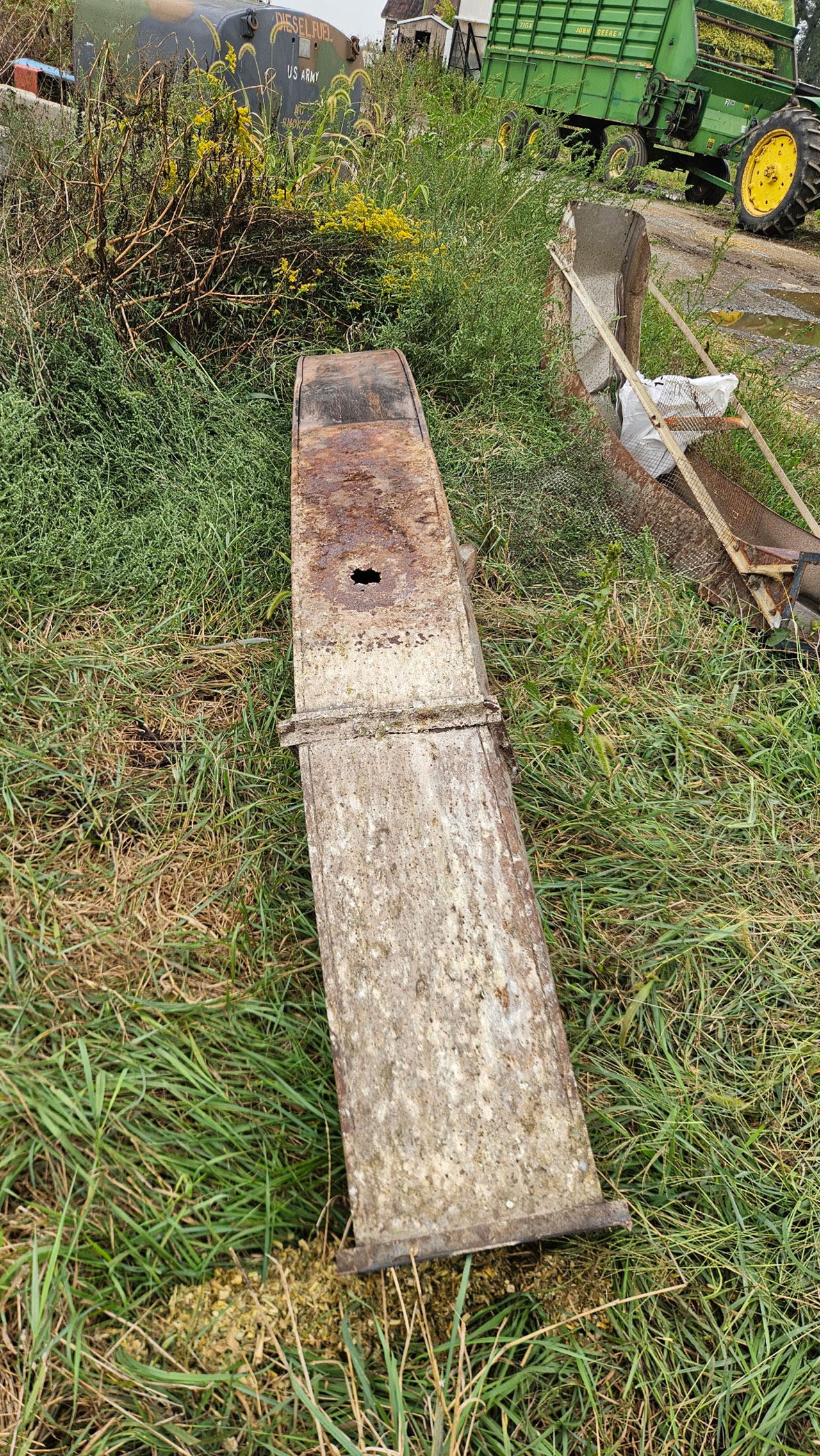Ask any farmer and they will tell you: Rarely does a harvest season come without some sort of problem.
Corn silage harvest came to an unexpected halt on Glenn Brake’s farm this past week.
“We thought we had all our equipment rebuilt,” he says, “the silo unloader and the blower, and tractors and things ready. But we found another issue in the silo, so we couldn't fill.”
The problem? A broken gooseneck.
“That gooseneck is worn out,” Brake says. “The silage isn’t sliding over, and it’s plugging up the pipe. It's aged. It's probably time to replace. But you can't get up there and inspect it. So, we're at the point where we're going to have to get somebody to come take it down and put a new one in.”
Thankfully, it only delayed harvest by a week. And the corn, he says, is in good enough shape to wait.
“There’s plenty of moisture in the corn,” Brake says. “We’re not rushed to start harvest right now. I stagger my corn silage anyway, so not everything needs to be done at once. The moisture percentage right now is over 70%, so there’s plenty of juice in it.”
Brake owns Oakleigh Farm, a dairy farm in Mercersburg, Pa., that includes 139 milking cows with 130 young stock and heifers in a robotic milking facility. He grows more than 400 acres, including 100 acres of alfalfa, 200 acres of corn, 70 acres of small grains, and full- and double-crop soybeans.
About 10% of the silage is harvested. He started at the end of August with the initial cuttings producing good tonnage, he says.
Soybeans are close to being ready and look good. The fourth alfalfa cutting is the final one of this season. “It got real dry in August. I was able to get four cuttings, but the last one was very thin. But I think I have plenty of hay,” Brake says.
Oats and black oats for cover crops have been planted. Winter wheat will be planted next month after silage is done.
"We have a good supply of barley this year, and since we've been doing cover crops, we’re not planting as many acres of small grains,” Brake says. “To get a combine to come in here and do small acres, I hate to ask them, so it's easier to plant barley one year and wheat the next year. My supplies are good at the elevator, so that's what made that decision.”
Taking on tar spot
It’s been a quiet season overall, but Brake has seen some surprises along the way.
One surprise: finding tar spot. He found it for the first time in one of his cornfields, and it spread rapidly.
Rather than chopping the field right away, Brake says he hired a drone operator to come in and apply a fungicide, something he’s never done before.
“Because I just knew that I wouldn’t get to those fields until later,” he says. “I didn’t want to lose nutritional value of that corn.”
Whether this will affect the corn he plants in 2026 remains to be seen.
"It will be a question we ask and bring up and visit,” Brake says. “Now, whether we make purchase decisions if we need to do that, or if there is resistance in the technology or not, I don't know. It will be a learning experience in November when they come around and sell you seed.”

Expenses keep rising
The cows are what pay the bills on Brake’s farm. To that end, milk production has declined to about 80 pounds per head. He explains why.
"We have a lot of cows fresh here in September, and we have a lot more to be fresh, so as the herd dynamics change on that it should change and go up,” he says. “We have a lot of late-lactation cows right now.”
One thing that keeps rising is expenses, and the milk check, he says, isn’t keeping up.
"The biggest thing is the rise in expenses, and that's the thing that's hurting the most even though I know the cost of grains are down. But it's just all the increases in expenses associated with whatever we need to purchase," Brake says.
The cost to fix machinery is up. Sawdust bedding is now 15% more expensive than last year.
Brake says he’s done as much as he can to tighten his belt. He’s moving away from alfalfa and instead planting more cover crops, which he says will cut down on machinery costs. He’s also looking at ways to be more energy efficient. His Lely robotic milkers are more energy efficient, but the overall electricity bill is still much higher than it was before.
But the cows still need milked, and the crops still need planted next year. Brake says he’s hanging on and dealing with it.
“We're kind of at the point where you can’t cut back much on input costs, or you're going to cut back on yields. It's tough right now,” he says.